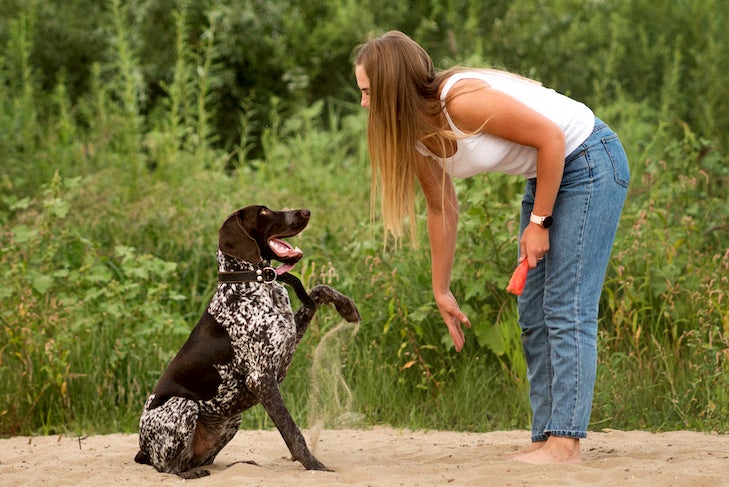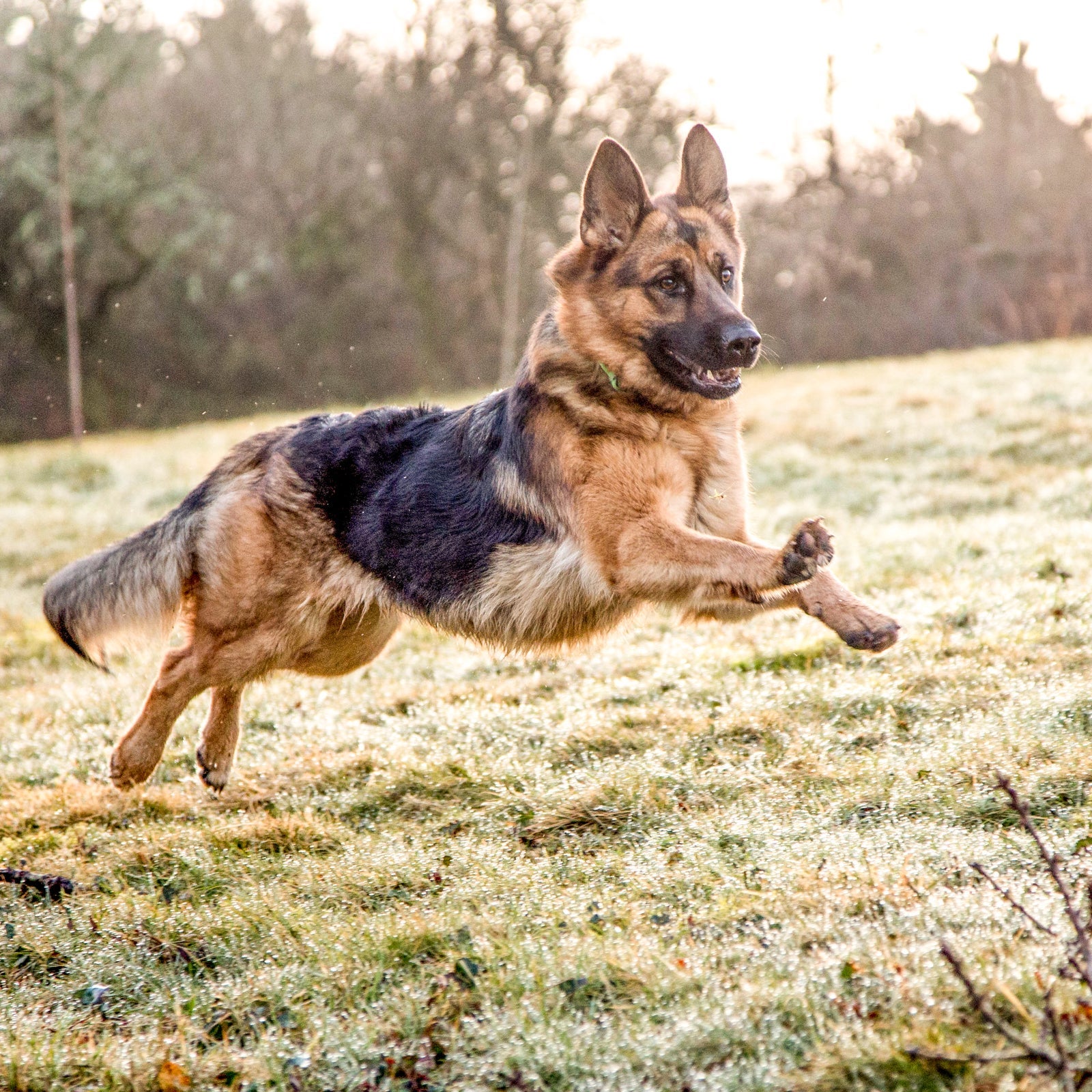Affordable dog obedience services Raleigh NC solutions to help your pet succeed.
Affordable dog obedience services Raleigh NC solutions to help your pet succeed.
Blog Article
Master Crucial Commands: Efficient Dog Educating Facilitated
Efficient pet dog training is a basic element of responsible pet ownership, and understanding vital commands functions as the structure for an unified relationship in between trainer and pet dog. Commands such as "Sit," "Remain," and "Come" not only assist in interaction yet also advertise a much safer environment. Using positive support methods can enhance the learning experience, yet many face obstacles in achieving consistent outcomes. Understanding the subtleties of canine habits and the training procedure is key; nonetheless, the journey to a trained dog frequently presents unexpected obstacles that call for attention. What strategies can absolutely change these challenges right into chances for growth?
Comprehending Your Pet's Habits
To comprehend the nuances of effective pet dog training, it is important to break down and evaluate your pet's actions. Dog training. Comprehending the inspirations behind your pet dog's activities is important; habits can originate from reaction, fear, excitement, or a desire for attention. By observing your dog in different situations, you can identify patterns that may suggest underlying feelings or demands
For example, a canine that barks excessively may be expressing boredom, anxiousness, or a demand for social communication. Alternatively, a dog that shows harmful habits might be looking for excitement or remedy for tension. Recognizing these triggers allows you to customize your training method efficiently.
Additionally, it is important to think about the pet's breed qualities, as they can affect habits significantly. Some breeds are inclined to particular attributes, such as herding or safeguarding instincts, which can affect their reactions to particular stimuli.
Finally, consistency in your actions to your pet dog's behavior promotes a better understanding between you and your pet. This mutual understanding is foundational for constructing trust and assisting in an efficient training procedure that supports both behavior correction and favorable support.
Necessary Commands to Educate
Teaching important commands is an essential facet of effective pet dog training, offering the foundation for a well-behaved and receptive animal. These commands not just enhance interaction in between the owner and the pet dog yet also guarantee security in different atmospheres.
One of the most critical commands include "Sit," which motivates your dog to remain fixed and calm; "Remain," which strengthens the concept of remaining in one area up until released; and "Come," which is important for recalling your canine from potentially hazardous scenarios. "Down" teaches pet dogs to rest, advertising leisure and control, while "Leave it" aids stop dogs from choosing up hazardous or undesirable things.
" Heel" is one more essential command that encourages your pet to walk very closely next to you, improving leash good manners. "No" serves as an important boundary-setting command, assisting to correct undesirable actions.
Training Methods for Success
Reliable dog training relies greatly on employing a range of strategies that provide to both the dog's click here to find out more learning design and the proprietor's training objectives. One crucial approach declares support, which entails fulfilling desired behaviors with treats, praise, or play. This approach urges the pet to duplicate those behaviors, cultivating a strong bond between proprietor and pet.

Another efficient method is clicker training, where an unique noise, made by a remote control, notes the precise moment a dog executes a wanted activity. This accurate timing aids canines link the actions with the incentive, boosting their understanding.
Consistency is crucial in all training methods. Establishing clear commands and maintaining the exact same signs helps the pet dog understanding expectations a lot more quickly. In addition, short, interesting training sessions protect against boredom and boost retention.
Including socializing opportunities is likewise crucial. Exposing dogs to various environments, individuals, and various other animals assists them create confidence and versatility.
Last but not least, perseverance plays a considerable function in effective training - Dog training. Each dog finds out at their very own rate, and recognizing this can bring about a much more delightful training experience for both the proprietor and the dog. Applying these strategies will establish the structure for effective pet dog training
Usual Challenges and Solutions
In spite of the most effective training techniques, dog owners commonly come across usual obstacles that can impede progress. One common concern is inconsistency in commands and cues. When household participants utilize various commands for the exact same habits, it puzzles the pet, bring about inconsistent reactions. The remedy depends on establishing a unified approach among all relative, guaranteeing that everyone uses the same terminology and signals.

In addition, some pet dogs might exhibit stubbornness or lack inspiration. This can typically be resolved by integrating positive support strategies, such as deals with or appreciation, to encourage wanted behaviors. Tailoring rewards to what your pet finds most motivating can significantly boost their involvement.
Last check but not least, anxiety or anxiousness can restrain development in training. Recognizing indications of anxiety and readjusting the training rate as necessary is vital. Utilizing gradual direct exposure to been afraid stimuli can assist construct self-confidence gradually, promoting a much more effective training experience.
Keeping Consistency and Perseverance
Uniformity and persistence are critical in canine training, as they create the foundation for achieving lasting behavior modifications. Pet dogs thrive on routine and clear assumptions; hence, preserving a consistent strategy in commands, incentives, and adjustments is necessary. When trainers utilize the same signs and signals accurately, canines are better able to grasp what is being asked of them. Incongruity can lead to confusion and frustration, undermining the training procedure.
Pet dogs, a lot like humans, have varying discovering rates and may not grasp commands right away. Positive support plays a crucial role here, rewarding wanted habits and assisting to cultivate a trusting connection between the canine and trainer.
Verdict
Mastering vital commands is essential to effective dog training, promoting enhanced communication and reinforcing favorable actions. The application of favorable support strategies, combined with uniformity and perseverance, substantially boosts the training experience for both the canine and trainer. Attending to common difficulties with sensible services further supports the training process. Inevitably, a well-trained pet not only shows etiquette yet also establishes confidence, adding to a harmonious relationship between the dog and its owner.
Report this page